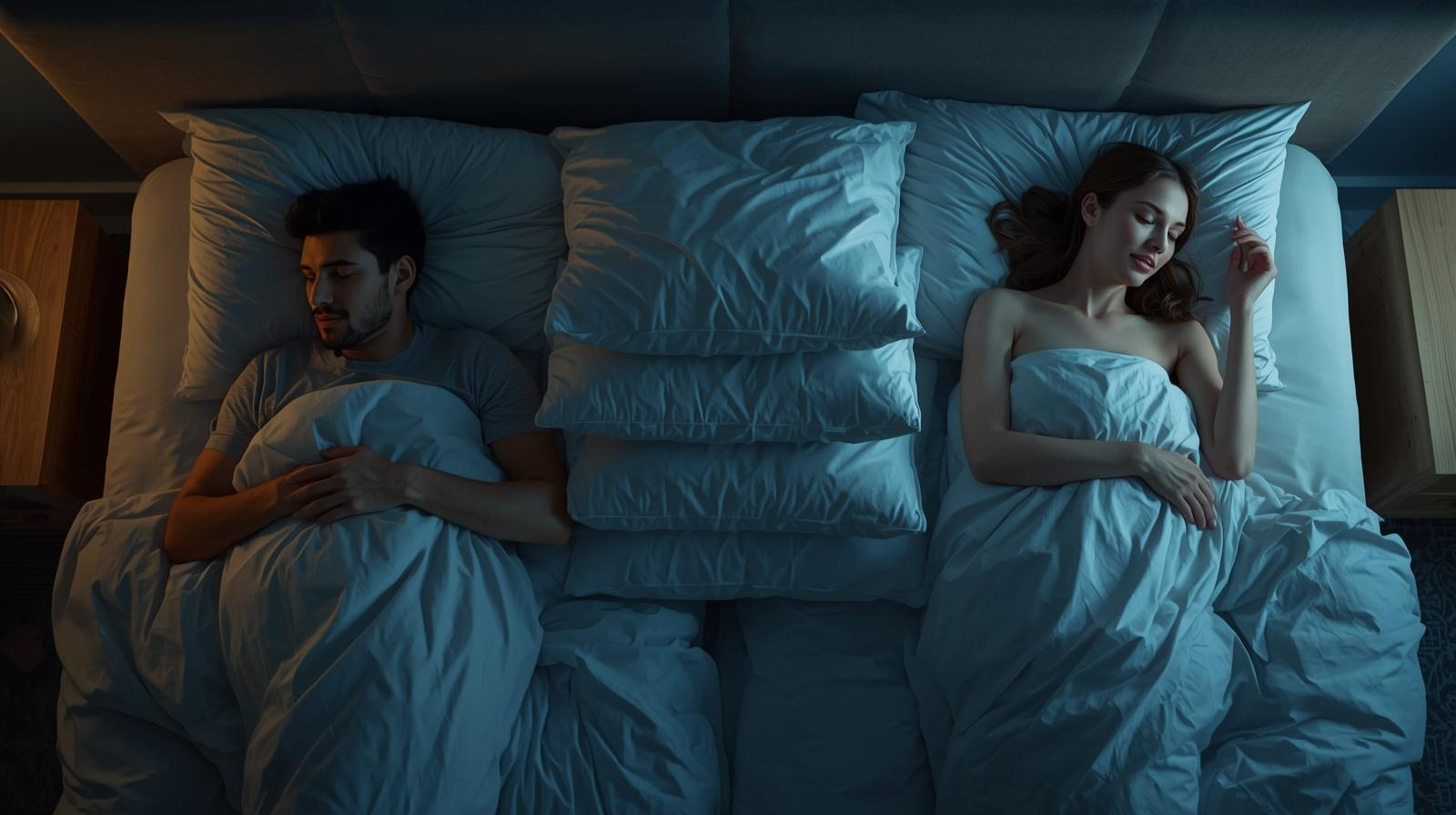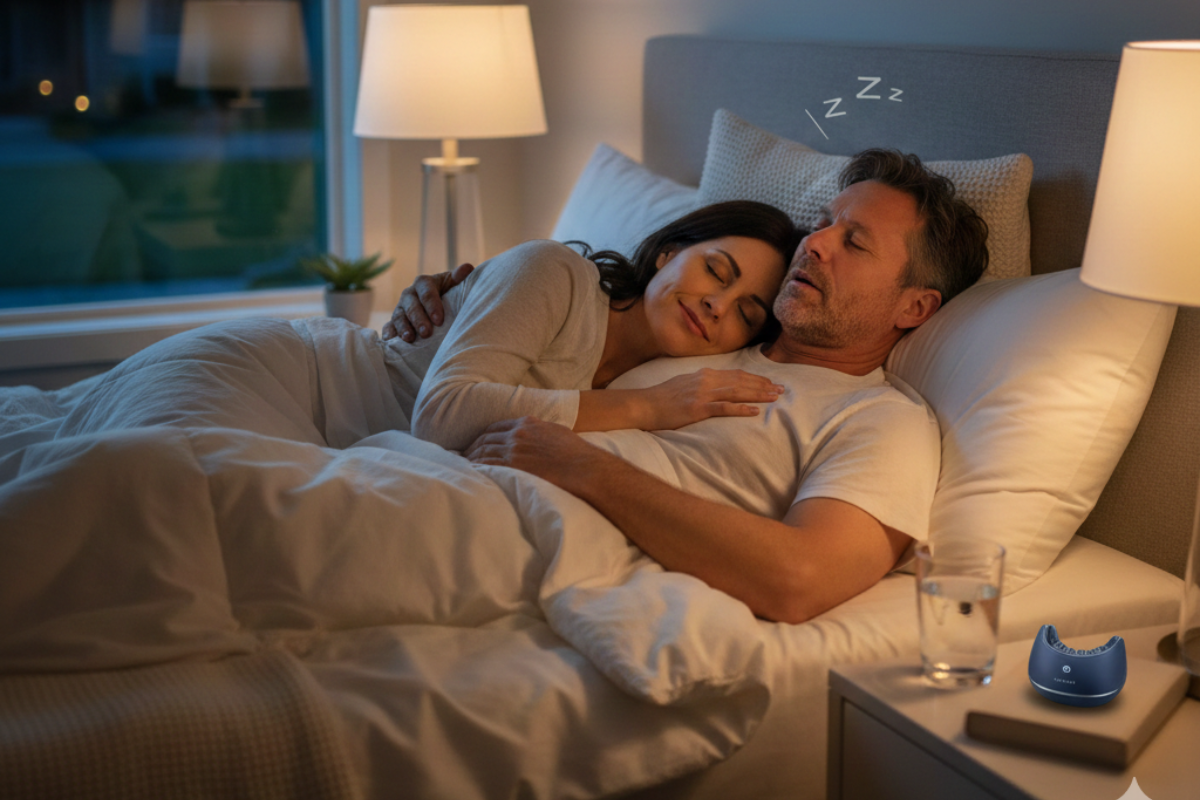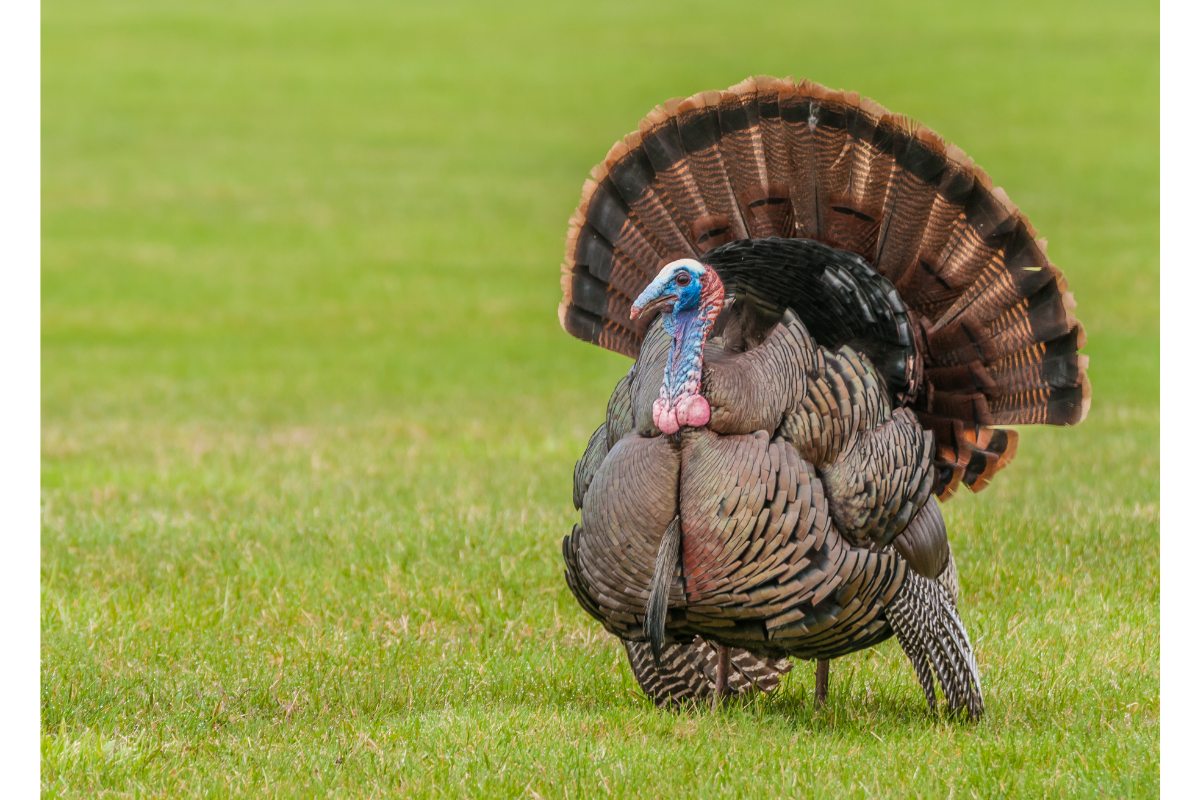Free Shipping - On Orders Over $175 (USA, Canada, UK, & AU)

5 Proven Tricks to Help You Fall Asleep Faster
November 14, 2021 4 min read
One feature of good sleep is being able to fall asleep quickly. And by “quickly,” sleep experts usually mean 10 to 20 minutes and no longer than 30 minutes after going to bed. If it normally takes you longer than that, you may have a sleep problem.
Poor sleep will cause your body’s stress system to go into overdrive, leading to trouble focusing, memory problems, mood swings, and accidents in the short term. In the long term, it doubles your risk of developing hypertension and metabolic problems.
Since most cases of poor sleep are a result of stress and anxiety, techniques that help put your body in a relaxed state can also make it easier to drift off. Here are a couple of these scientifically proven techniques to try.
1. The 4-7-8 Technique
Controlled breathing is one of the oldest remedies for putting the body in a relaxed and sleepy state. It is a core part of ancient meditation practice, and novel techniques are being developed to address issues caused by stress. One such example is the 4-7-8 breathing technique developed by Dr. Andrew Weil. Also called “relaxing breath,” it goes as follows:
- Breathe out
- Breath in slowly through the nose for 4 seconds
- Hold your breath for 7 seconds
- Exhale for 8 seconds through the mouth, making a “whoosh” sound
- Repeat 3 times
This type of slow breathing with its emphasis on breath-hold can help increase CO2 levels, which an older study published in Perceptual and Motor Skills found makes people drowsy.
2. Jacobson's Relaxation Technique
Another relaxation technique for sleep focuses on removing tension from your muscles associated with anxiety. Jacobson’s technique, also known as progressive muscle relaxation (PMR), was developed by Edmund Jacobson and first introduced in 1908 at Harvard University.
It involves relaxing different muscle groups at a time in a supine position, starting with the hands, progressing to the head and chest, and finishing with the legs and feet. With each muscle group, you do the following:
- Breathe in and tense the muscle group for 4 to 10 seconds.
- Breathe out and quickly relax the muscles.
- Relax for 10 to 20 seconds before working on the next muscle group.
As you do this, focus on how your muscles feel as you relieve tension and take slow, deep breaths.
3. Visualization
Something as simple as imagining pleasant scenes can block rumination and intrusive thoughts that otherwise make it difficult to fall asleep.
A popular visualization technique is guided mental imagery, which is essentially a controlled form of daydreaming. You simply try to get yourself into a peaceful state and visualize a relaxing scene as vividly as possible employing all your senses. Most using guided imagery prefer to visualize natural scenery, although imaging someone you love, a favorable event, or a favorite meal are common themes as well.
Studies on guided imagery frequently find they’re quite effective in helping hospital patients sleep better, especially when combined with other relaxation techniques.
4. Warm Baths and Showers
There’s nothing quite as relaxing as a warm bath or shower at the end of a long day. And it seems this widely practiced habit has scientific backing, especially when it comes to inducing sleepiness.
A systematic review and meta-analysis published in 2019 and led by a team at the University of Texas at Austin found that taking a warm 1-2 hours before bed for as little as 10 minutes helped people fall asleep quicker than usual. These findings support the theory that lowering core body temperature makes people sleepy. Hot baths or showers help lower core body temperature by increasing blood flow to the skin and extremities, leading to heat dissipation.
A bath or shower just a couple of degrees above your body temperature is necessary for this to take effect.
5. Daily Walks
Being physically active is one of many sleep hygiene practices that help improve sleep quality. But you don’t need to join a gym to get the effect; something as simple as a walk in the afternoon or evening can make a huge difference in sleep quality.
Walking and other forms of physical activity stimulate the release of endorphins and other feel-good hormones, which can put you in a relaxed state. Mindful walking — where you focus on the here and now during a walk — can also help put your mind at ease at the end of a stressful day.
Besides walking, adding 150 minutes of any form of physical activity into your week will improve your overall health, including lower stress levels.
And if you’re having trouble falling asleep due to external factors — like a hot or noisy environment or a snoring bed partner — then setting the thermostat to a lower temperature, using earplugs, and suggesting anti-snoring solutions like our Tongue Stabilizing Devices to your loved one can help.
References:
ScienceDirect. Sleep Onset Latency. From: Handbook of Clinical Neurology, 2019.
https://www.sciencedirect.com/topics/medicine-and-dentistry/sleep-onset-latency
Medic G, Wille M, Hemels ME. Short- and long-term health consequences of sleep disruption. Nat Sci Sleep. 2017;9:151-161. Published 2017 May 19. doi:10.2147/NSS.S134864
Chóliz M. A breathing-retraining procedure in treatment of sleep-onset insomnia: theoretical basis and experimental findings. Percept Mot Skills. 1995;80(2):507-513. doi:10.2466/pms.1995.80.2.507
InformedHealth.org [Internet]. Cologne, Germany: Institute for Quality and Efficiency in Health Care (IQWiG); 2006-. Insomnia: Relaxation techniques and sleeping habits. 2008 Aug 18 [Updated 2017 Mar 9]. Available from: https://www.ncbi.nlm.nih.gov/books/NBK279320/
Kwekkeboom KL, Bratzke LC. A Systematic Review of Relaxation, Meditation, and Guided Imagery Strategies for Symptom Management in Heart Failure. J Cardiovasc Nurs. 2016;31(5):457-468. doi:10.1097/JCN.0000000000000274
Haghayegh S, Khoshnevis S, Smolensky MH, Diller KR, Castriotta RJ. Before-bedtime passive body heating by warm shower or bath to improve sleep: A systematic review and meta-analysis. Sleep Med Rev. 2019;46:124-135. doi:10.1016/j.smrv.2019.04.008
Also in Blog

💨 Are Your Nighttime Breathing Issues Robbing You of Your Health and Your Energy?
December 12, 2025 3 min read
Breathing issues during sleep, collectively known as sleep-disordered breathing, are a major public health concern.

Is Your Snoring a Sign of Something More Serious? Unpacking the Science of Sleep
December 05, 2025 3 min read
When you snore, what's actually happening?

Can Turkeys Snore Or Get Sleep Apnea?
November 26, 2025 2 min read
Join our Insiders Club
Every week you will receive specials, discounts, and giveaways.
Categories
- Better Sleep
- depression
- Fitness
- funny animal
- Global Citizenship
- health
- Mental Health
- mouthpiece
- nutrition
- pillow
- Productivity
- relationships
- sleep
- sleep apnea
- sleep deprivation
- Sleep Tech
- snoring
- snoring humor
- snoring jokes
- snoring sounds
- stop snoring
- StopSnoringStartLiving
- technology
- Tongue displacement
- travel
- video
- Young Adult
Recent Articles
- 💨 Are Your Nighttime Breathing Issues Robbing You of Your Health and Your Energy?
- Is Your Snoring a Sign of Something More Serious? Unpacking the Science of Sleep
- Can Turkeys Snore Or Get Sleep Apnea?
- Foods from Every Food Group which Promote Sleep
- How Weather Changes Ruin Our Sleep (And How To Fight It)

